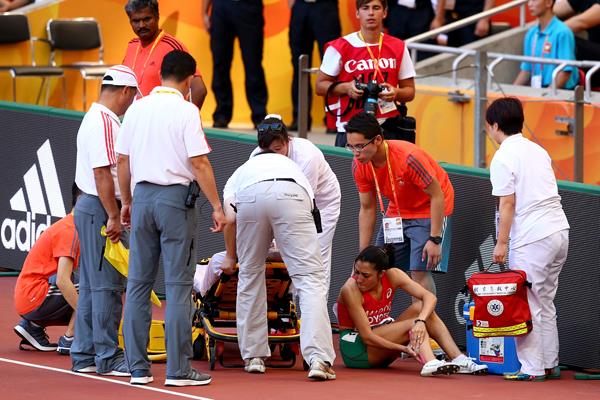On the occasion of the IAAF World Championships, Beijing 2015 the IAAF will once again conduct a comprehensive Injuries and Illnesses Surveillance Study.
Beijing will represent the fifth occasion where the IAAF has employed an Injuries and Illnesses Surveillance Study at the biennial World Championships, the pinnacle competition of the IAAF World Athletics Series.
The study, which is in line with the International Olympic Committee (IOC) Medical Commission efforts, is performed in cooperation with the Athletics Research Center coordinated at Linköping University (Sweden).
An Injuries and Illnesses Surveillance Study was first put into place during the 11th edition of the IAAF World Championships in Osaka 2007 and has been repeated in Berlin 2009, Daegu 2011, and Moscow 2013.
Similar studies have also been completed at numerous other IAAF competitions including editions of the IAAF World Indoor, IAAF World Junior and IAAF World Youth Championships.
The IAAF has recently published papers summarizing the results in peer-reviewed scientific journals (Clinical Journal of Sports Medicine and British Journal of Sports Medicine). It is noteworthy to mention that between 10-14 out of every 100 competing athletes suffered a sports injury during the previous IAAF World Championships and, on average, while nearly seven out of every 100 competing athletes suffered an illness during Berlin 2009, Daegu 2011 and Moscow 2013.
The IAAF is part of the IOC Injury Study Group that has set the basis for injury and illness surveillance in Olympic sports. The IAAF Medical and Anti-Doping Commission is committed to making our sport safer for our athletes and is increasingly emphasising the protection of athletes’ health and the prevention of injuries and illnesses.
The participation of the national team physicians and physiotherapists in Beijing is extremely important for the success of this project.
Team physicians will assist this study by reporting all injuries and illnesses of their athletes on a daily basis using a report form which is then returned to the IAAF research team. The Local Organising Committee doctors are also requested to report all injuries and illness that they might attend to.
All information regarding gender, age, nationality, diagnosis, symptoms, anatomic locations etc is treated with the strictest confidentiality and safeguarded by the IAAF Medical and Anti-Doping Commission.
Subsequent to the data collection and analysis, the IAAF will share the gained knowledge with the sports medicine community all over the world via international scientific publications.
The resulting knowledge will help the IAAF to develop and implement future prevention strategies and decrease the number of illnesses and injuries incurring at championships.
The ultimate goal with this longitudinal study is to transfer the science into practice by providing the national medical teams with practical and useful information that will help them prevent sports injuries and illnesses among their athletes.
IAAF







 Countdown
Countdown





